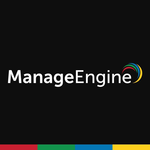I am using Intune to manage both mobile devices and PC devices. I deploy applications and manage the security landscape.
The most valuable feature for us is the security, including risk analysis and patch management. The management is very important for us.
The configuration could be better by consolidating options and making it simpler. I would like to have one option in one place that corresponds to one feature, which I can check off and move onto the next one. As it is now, there are a lot of options. For example, when configuring security, I find that it is too much because you have to configure one task in one place, then switch and it is against in another place, and so forth.
In the future, I would like to see support for security and compliance management. I would also like to see iOS management options.
I have been using Microsoft Intune for five years.
This is a stable product.
Being a cloud-based solution, it is very easy to scale.
We have approximately 30,000 users.
I have contacted the Microsoft technical support lots of times. It is okay and I am satisfied with it.
We did not use a different solution for the same purpose before implementing Intune.
The initial setup was simple and it took us about two days to deploy it.
Intune only supports mobile devices in the cloud version. Because a number of my clients have both PCs and mobile devices, I deployed it in a hybrid model.
I am responsible for configuration and deployment, and sometimes maintenance. Our help desk also handles the maintenance.
The price of Intune is often included as part of a bundle with other Microsoft licenses, which makes it somewhat cheaper.
Microsoft Intune is cost-effective and easy to use, so I can recommend it. That said, it is not perfect, so I think that they can improve a lot of things.
I would rate this solution a seven out of ten.

















